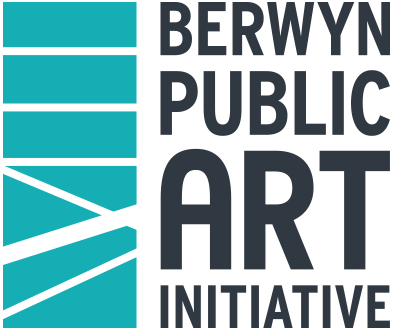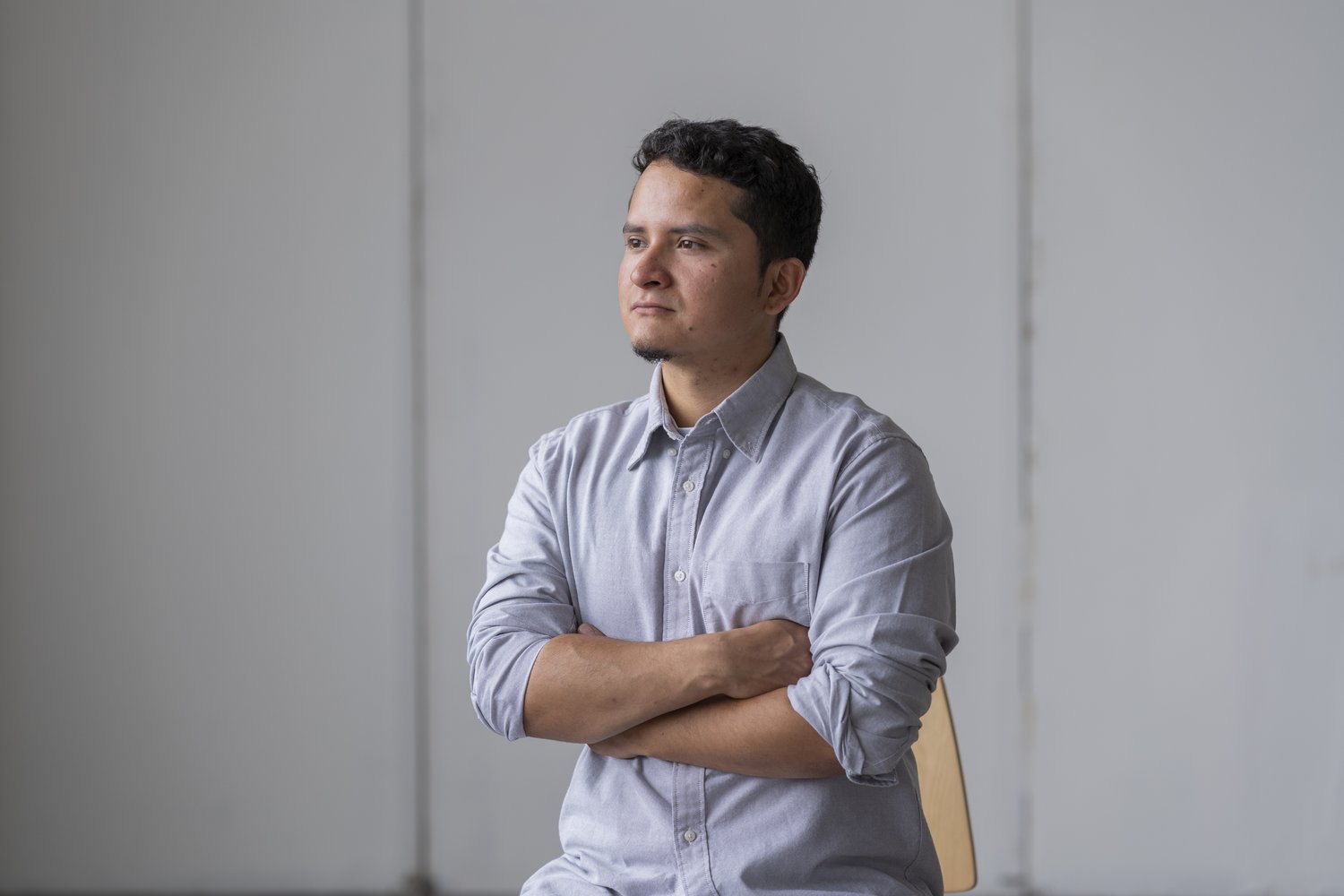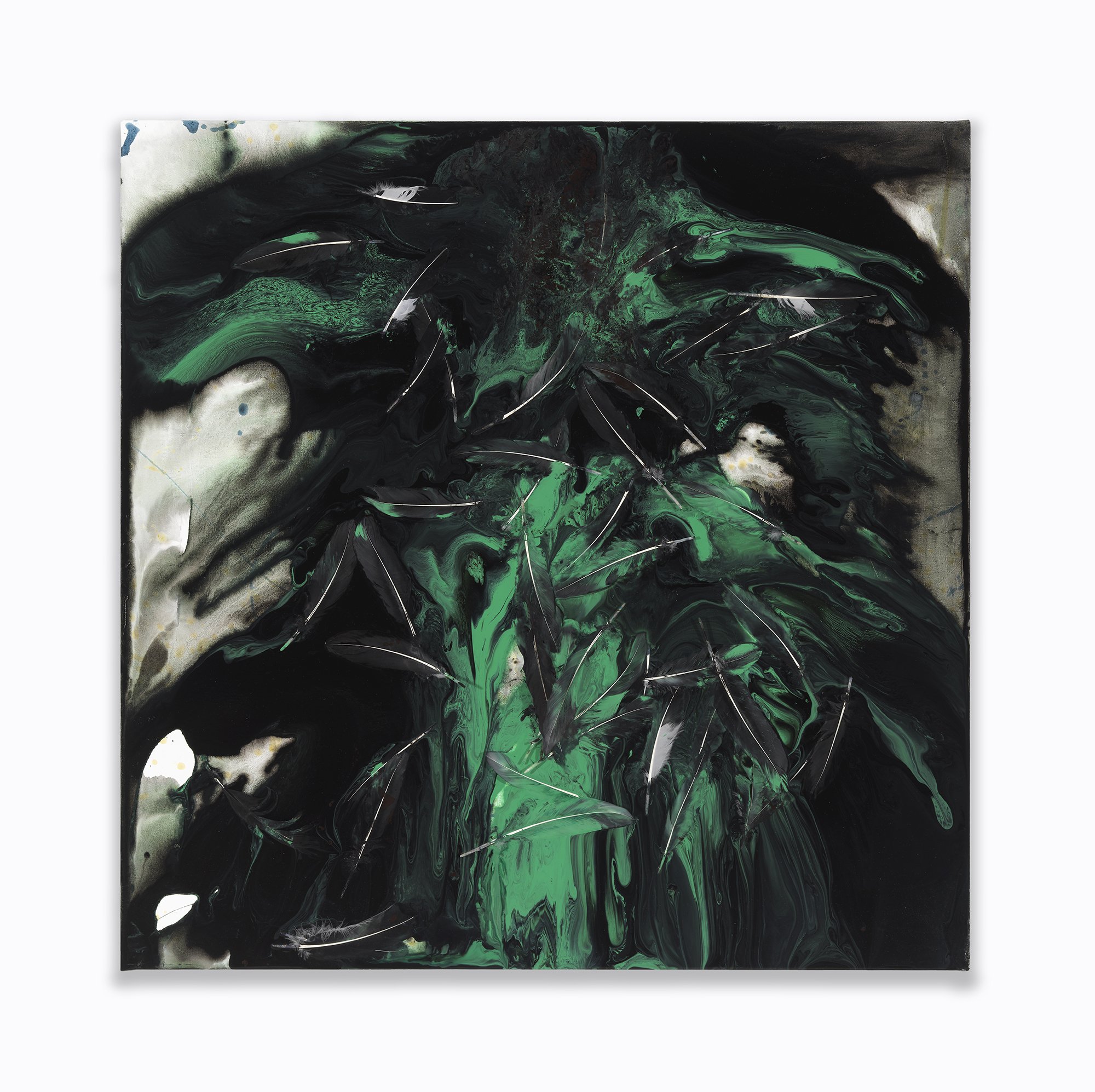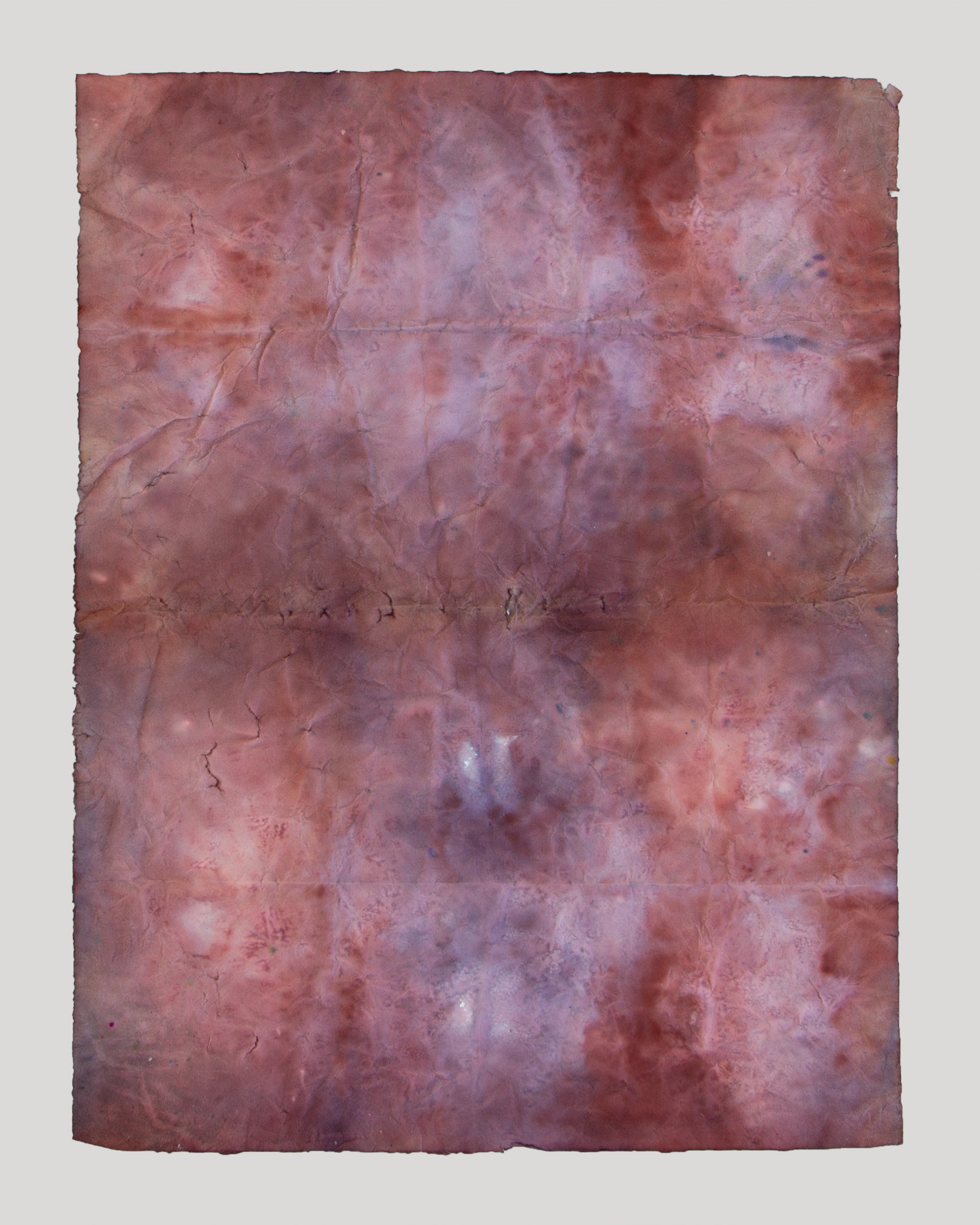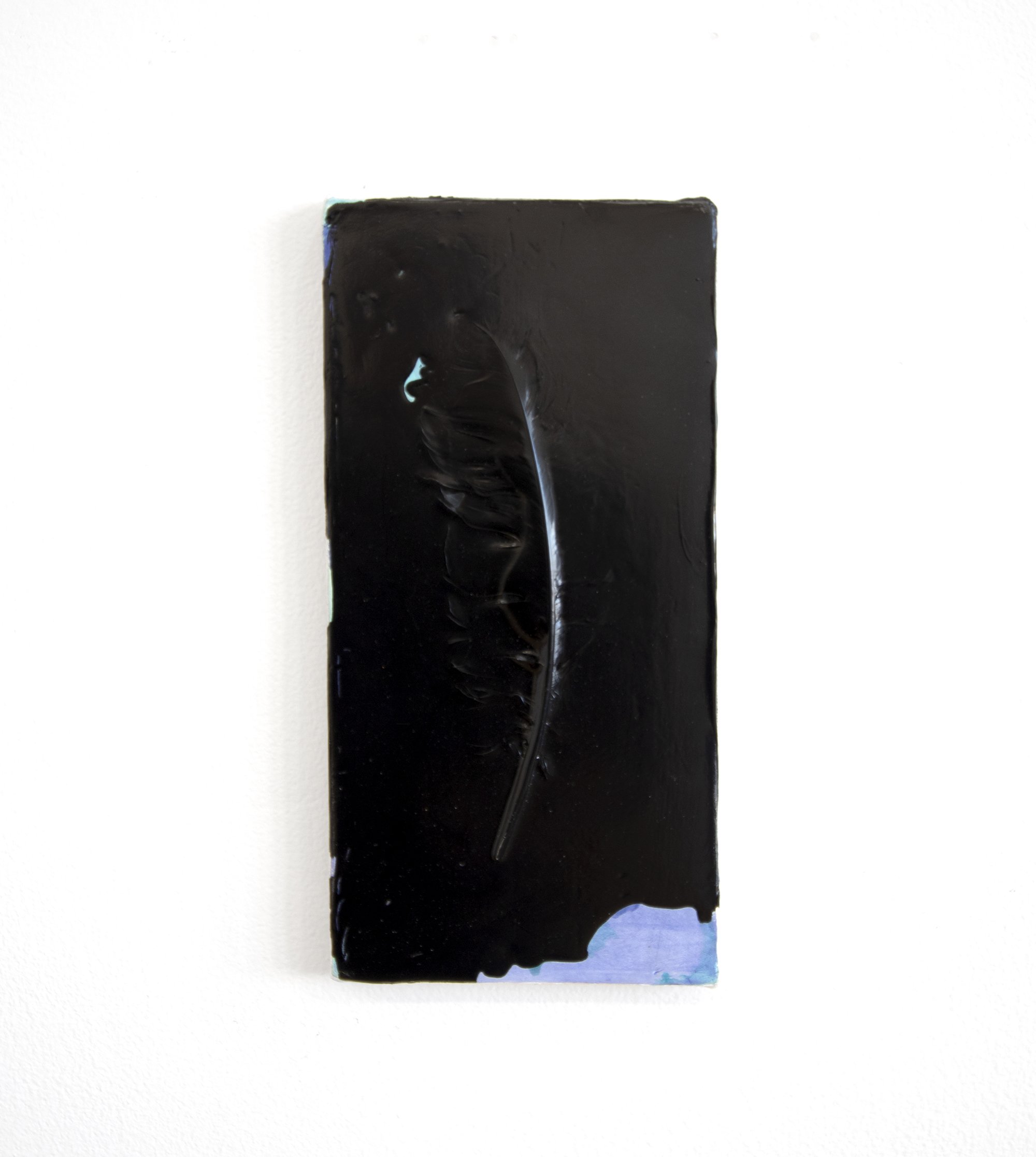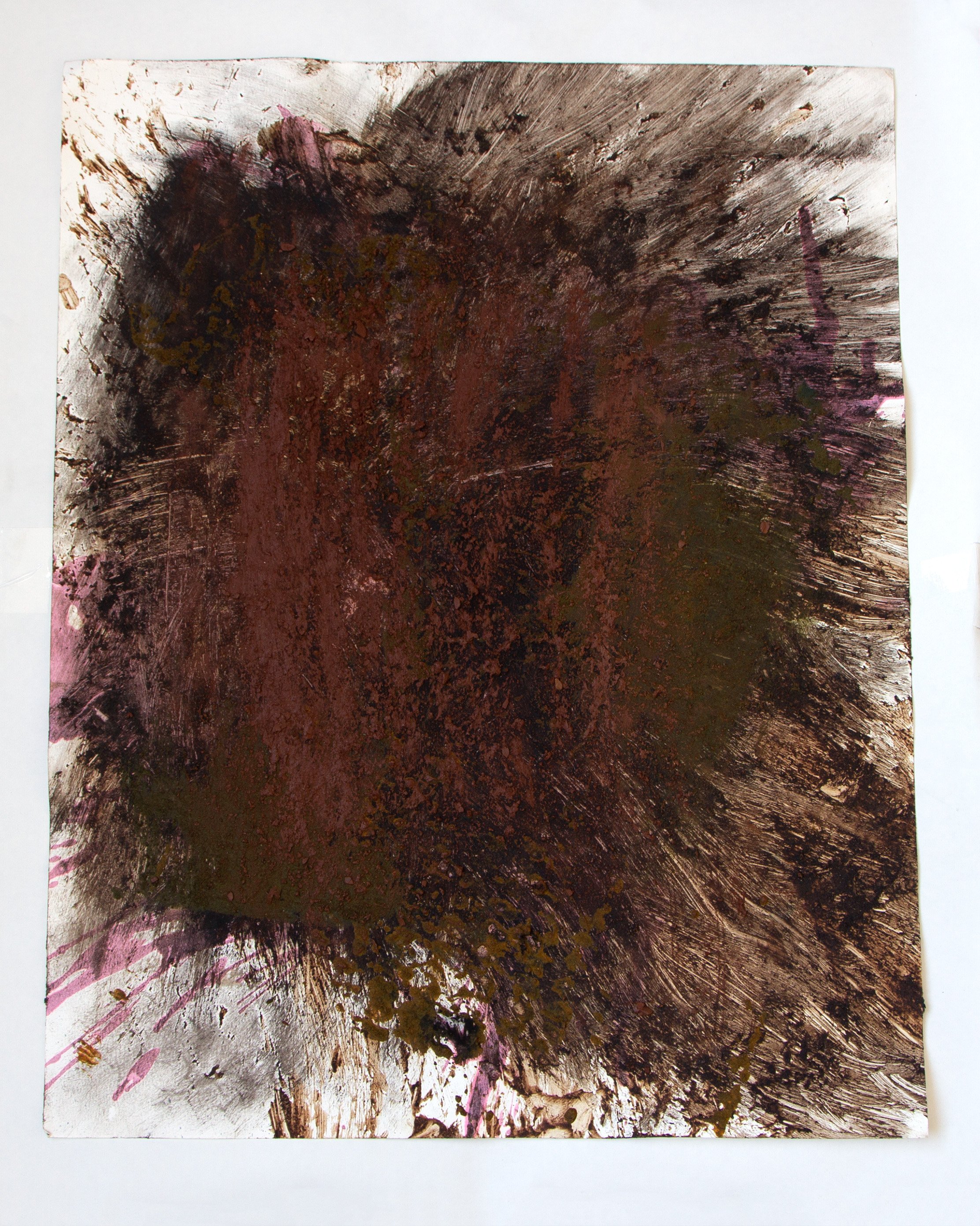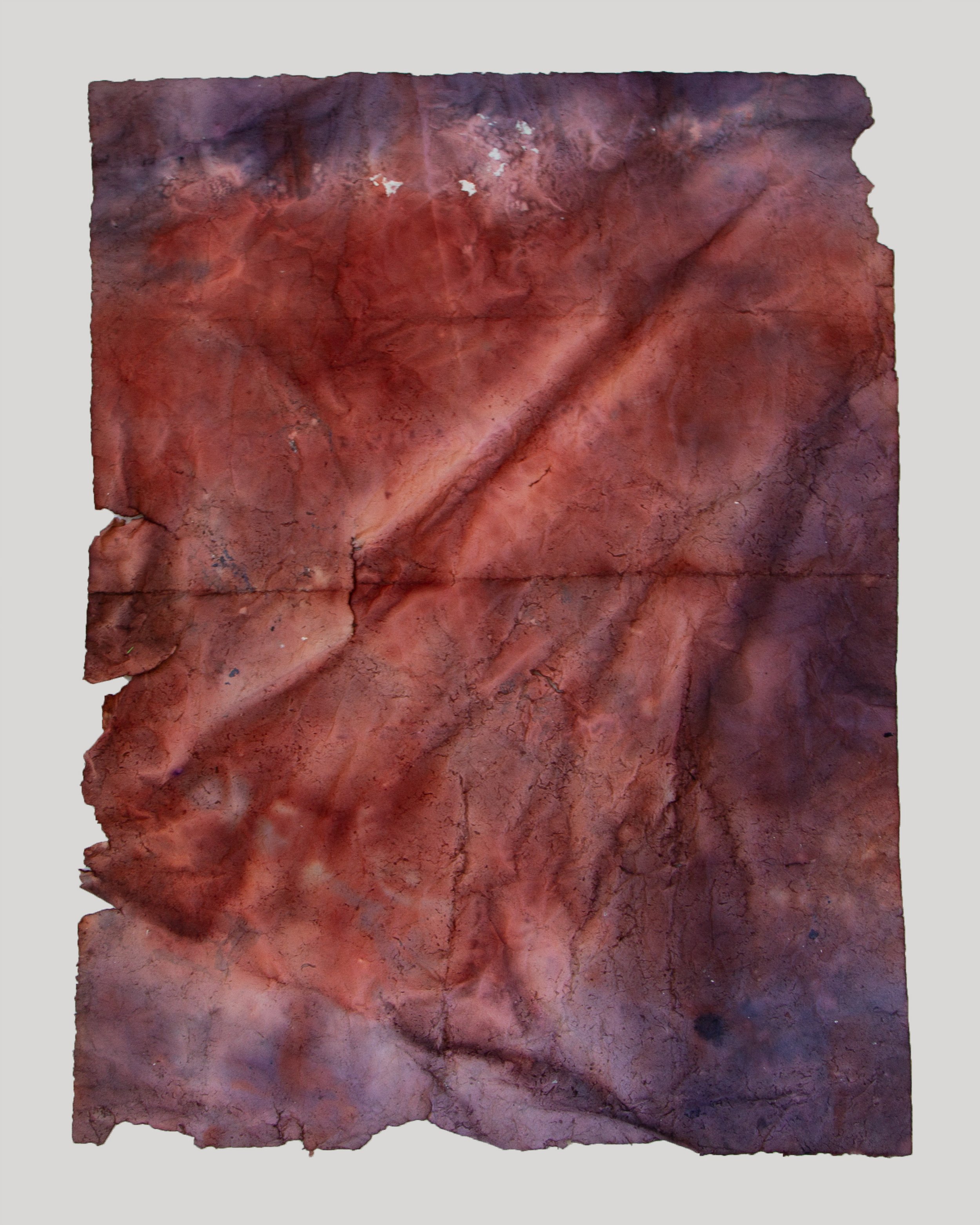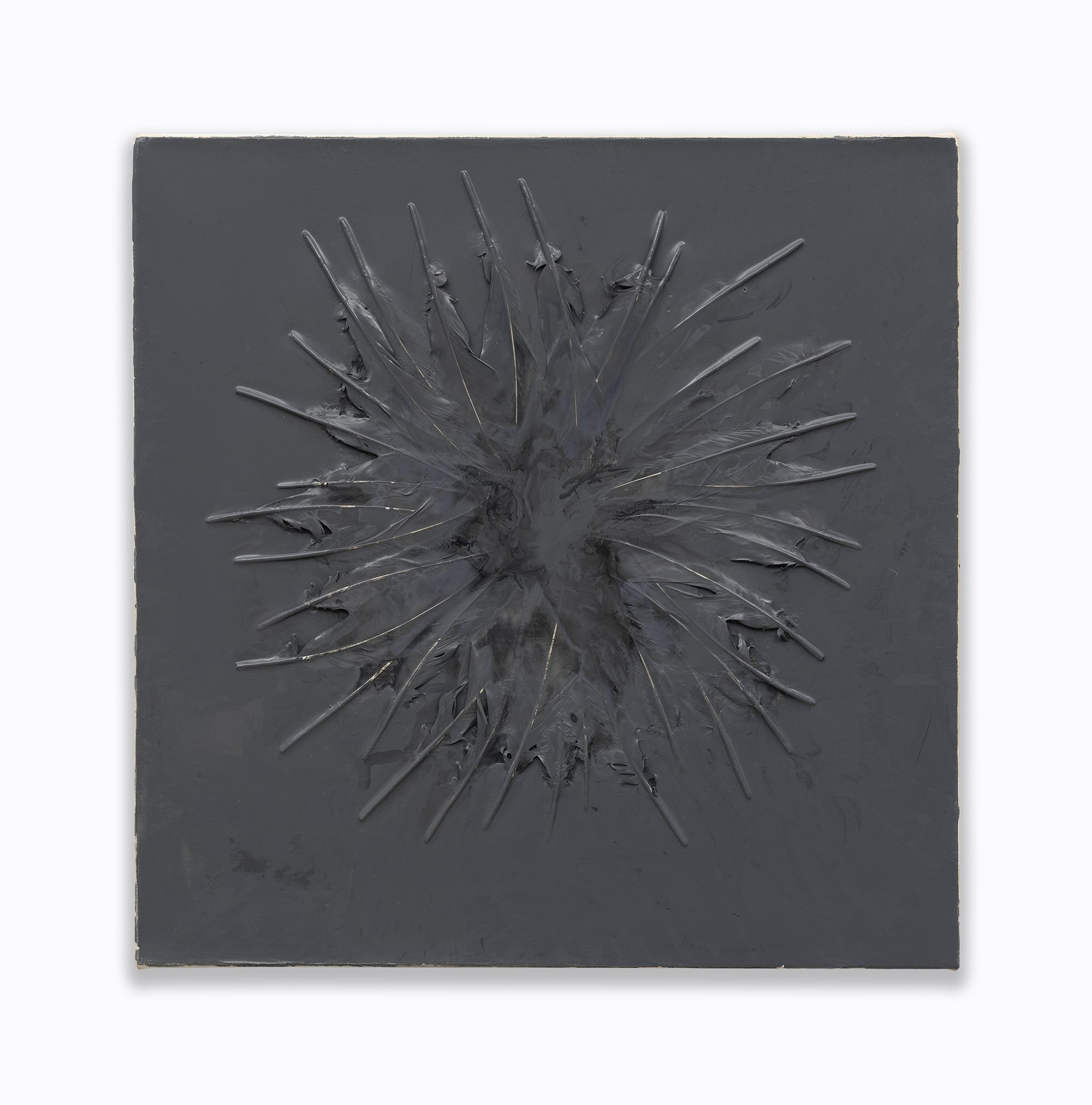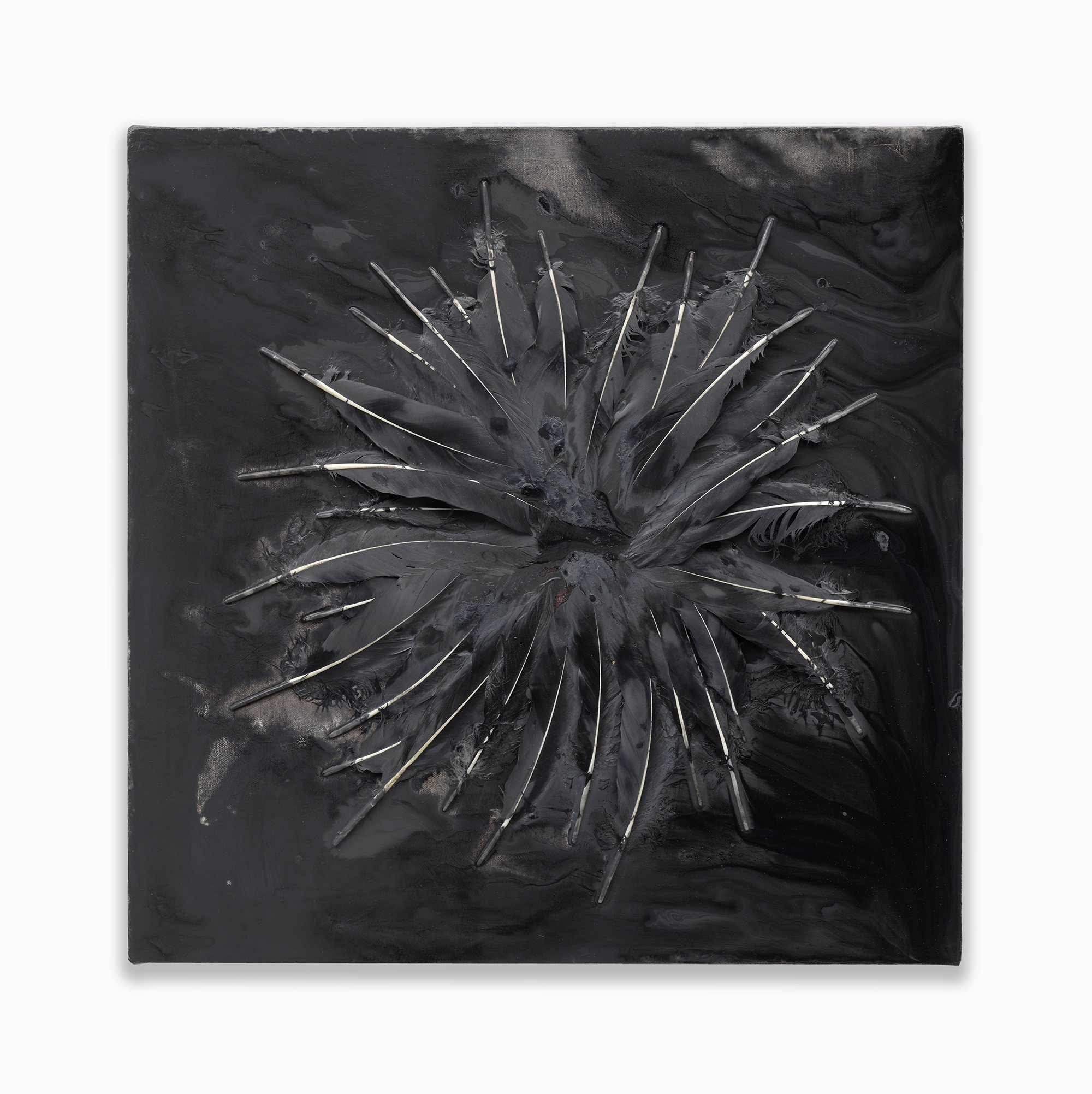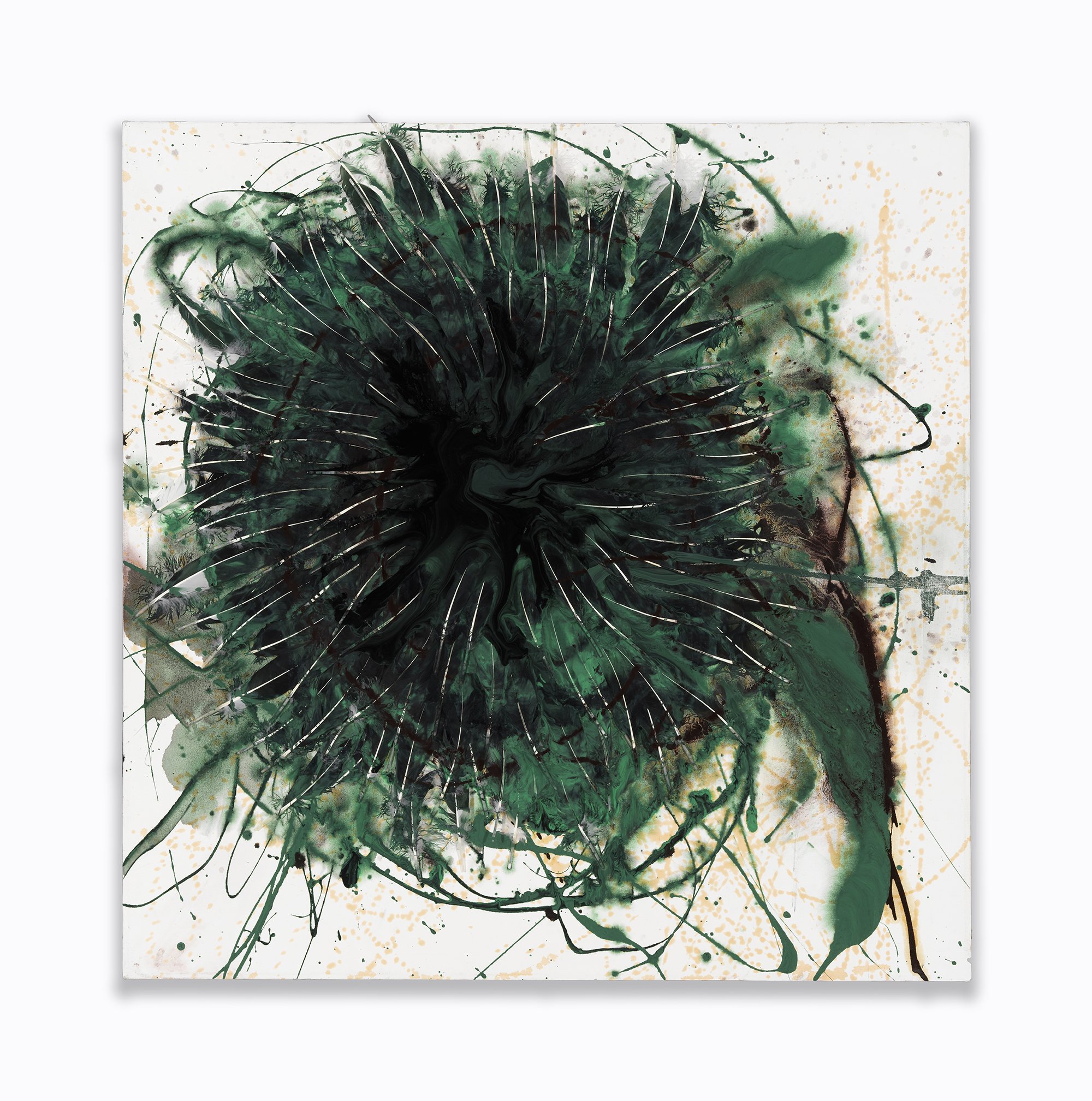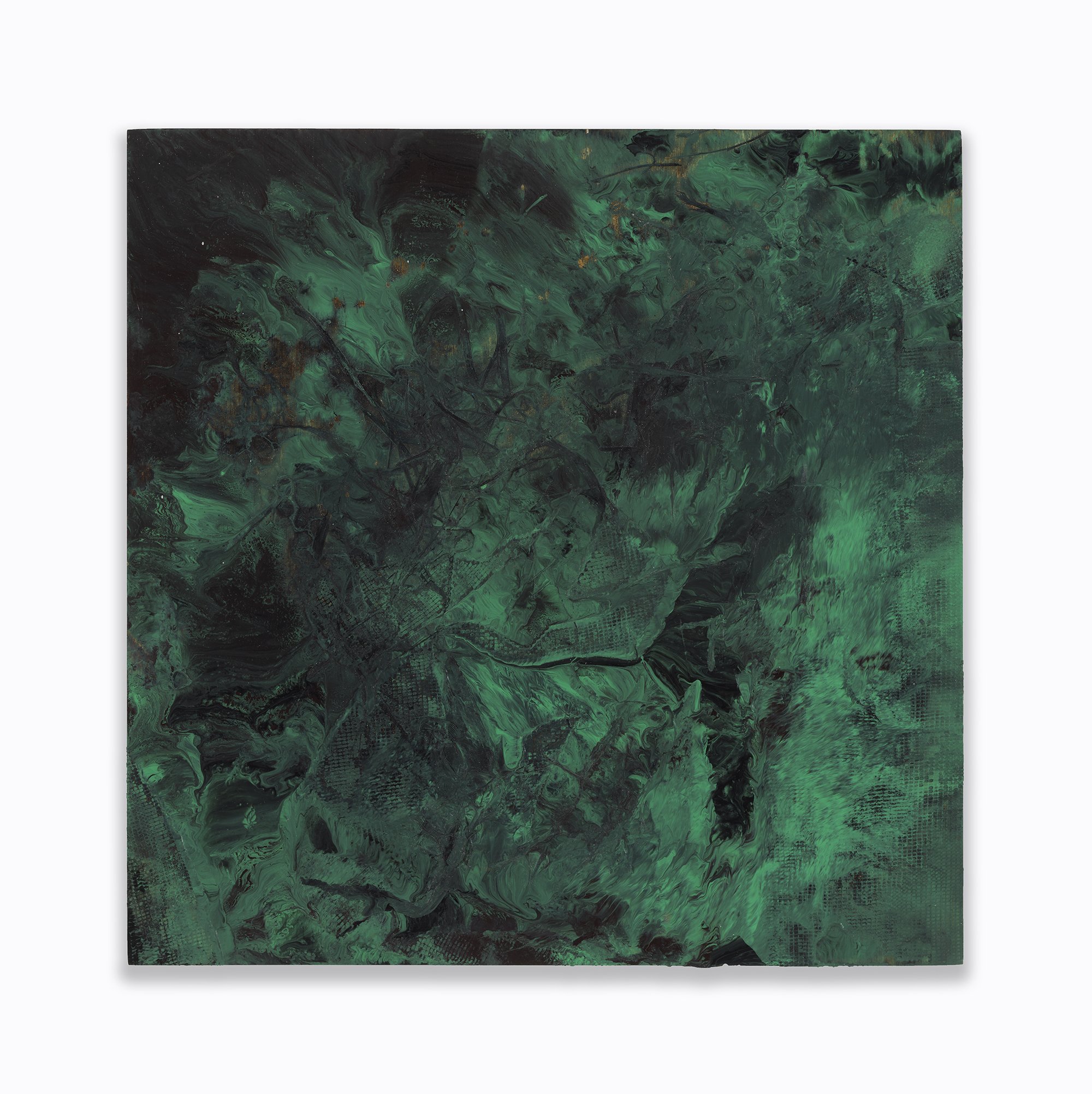Frank Vega
We are delighted to present the work of Frank Vega, a brilliant interdisciplinary who traverses the realms of sculpture, painting, and hybrid objects to craft a rich tapestry of artistic expression. His practice is an intricate dance between personal mythology, memories, the pulse of current world events, and the vibrant interplay of abstraction and other art histories.
Frank takes a methodical approach in every step of his practice, from sourcing materials, fabricating additional elements, and orchestrating materials into harmony, all of which inform the storytelling of his work. There is a level of care that is persistent, visible, and memorable.
“Art unlocks the world of feelings. The beauty of art is like a puzzle; it needs time and participants to be solved”
We are elated to be featuring three works of his in the Community Art Collection “Timekeeper” and “Untitled” which feels like a celebration offering time and space for viewers to dip into a meditative portal of chroma and form. In addition, the third piece “Se Crese Done Se Quiere” is a painting that includes hand-carved wood elements that emit grounding vibrations.
We want to congratulate Frank Vega on his recent solo show, Zero° with Devening Projects, featuring a new body of work, and invite you to read our interview with him, below. In addition, we have a catalog that features available works for those looking to expand their personal art collection.
Vega lives and works in Chicago. He received his Master of Fine Arts from the School of the Art Institute of Chicago and a Bachelor of Fine Arts from the University of Illinois at Urbana-Champaign. He has exhibited at the Hyde Park Art Center, Chicago; MDW Fair at Mana Contemporary, Chicago; The Green Gallery, Milwaukee; Koik Contemporary, Mexico City; and the Krannert Art Museum, Champaign, Illinois. He has been awarded a Frankenthaler Scholarship from the School of the Art Institute of Chicago, the Florence M. House Scholarship, and the Helen E. Platt Blake Scholarship, both from the University of Illinois at Urbana-Champaign, and a Leroy Neiman Fellowship from Ox-Bow School of Art.
Artist Q&A
A conversation between Michelle Ruiz and Frank Vega
Michelle Ruiz: Tell us a little about your background and what led you to the arts.
Frank Vega: I was born in Ecuador and moved to Chicago when I was 12. Since I can remember, I was always curious about objects and how they function. I would spend a lot of time drawing cartoons and taking things apart. Nothing I got when I was young remained the same after the first month. I was always looking for ways to combine different objects. Now, I like to think of my art-making as an anthropologist studying the visual and material world to understand my existence and how we construct knowledge, identity, and culture. The reason why I remain an artist is because mistakes become stepping stones for new ideas.
MR: What are the center stone themes or subjects that you bring forth in your multidisciplinary practice?
FV: The main themes I am currently working with involve creating presentation formats for objects to shift their current value and function. The objects and shapes I work with are metaphors to think about the body as a nonstatic entity going through constant transformations. I am very particular about my materials and processes as they carry the storytelling forward. It is not about creating an image of what needs to be represented; instead, I want to convey it through the materials I use.
Currently, I am developing my work around the idea of Units. This concept allows one to focus on the presentation aspects of my work. These Units become vessels of memory that transcend their material physicality, creating objects of contemplation and power. This concept is carried by considering the potential of one's body as an altar of accumulated knowledge.
The construction of these Units starts by gathering, collecting, and then arranging. The materials come from the urban landscape and the home. These fragments bring different locals into a single Unit. The work builds from the accumulation of objects to point not only to who uses them but also to how they are produced, bringing into question our contemporary structures.
MR: Your choice and treatment of materials always feel expansive and exploratory in a very rich way. I love the way you highlight your woodworking craftsmanship, incorporate musical abilities, sculpt wax, reflect nature in your work, and also tease out the canvas material to highlight its soft texture. Can you tell us more about what materials you are exploring/gravitating to at the moment and how you are incorporating them into your work?
FV: I am currently working on large peeled paintings by transferring the textures from a pleader material with a snake-like surface into a canvas. I am applying paint between the textured surface and canvas to reveal a new skin when the paint dries. This project came from a recent conversation with my mother, who told me about her journey when crossing the U.S.-Mexican border. She mentioned that on the last day of her journey, her legs could no longer move, so she thought of transforming herself into a snake to continue the part. Thankfully she had two people carry her on their shoulders to complete the path.
From the same conversation with my mother, I started working with ceramics for their fragile and sonic qualities. I am creating fragments that get accumulated. The ceramics have a snake-like imprint produced by stepping on clay. I like to think of these steps as a connecting mechanism that permanently records the efforts one endures moving forward. Highlighting the labor and gestures in my work is to point to how the basic unit of labor in the U.S. is built.
MR: We are excited to feature three works of yours in the Community Art Collection housed at Baird & Warner. Two pieces are from the same series "Timekeeper" and "Untitled" on canvas measuring 20" x 16". Can you tell us more about these works?
FV: This group of paintings originated from my will to construct a future intimately intertwined with the present that transcends personal limitations. Each picture becomes an architectural blueprint, inviting us to interact with the external space and our internal reflections. The different paint applications dance between foreground, middle ground, and background, allowing them to coexist harmoniously with one another, building a simultaneous reality of empowering energy. The forms and colors guide the viewer through a seamless path that shifts back and forth between a material and psychological space. In essence, this group of paintings challenges and allows us to reevaluate the limitations of our perception, taking us to a third space of meditation.
MR: Congratulations on your recent solo show Zero° with Devening Projects this past winter. I really enjoy the direction and scale of this work. Can you highlight one of the works unveiled in this show and your process when determining materials for this body of work?
FV: Unit-Flame, 12 x 6 in, is a painting that encapsulates a single feather on the surface. I have been collecting feathers from around the city and physically applying them on top of the surface of the painting. The enamel paint, a toxic material, encapsulates the feather protecting it but also poisoning it. With this work, I hope to point out the harm we produce to the natural environment, especially with the constant development of large industries. In this case, the goose feather is a metaphor, highlighting how natural resources such as petroleum, the primary material that makes enamel paint, get transported from foreign countries to the U.S. The feather, a symbol of purity and freedom, is imprisoned by this toxic material that permanently restricts its movement.
MR: Are there any mentors or favorite artists that have inspired your work?
FV: Yes, here is a small list of the artists I admire. Abraham Curz Billegas, David Hammons, Secilia Vicuna, Sam Gelian, Doris Salcedo, Damián Ortega and Camilo Egas.
MR: Do you have any upcoming events that we should bookmark?
FV: I have an upcoming solo exhibition at North Park University Gallery in October.
MR: Do you accept commissions within your multifaceted art practice?
FV: Yes, as long as it includes themes and materials I have used in the past.
